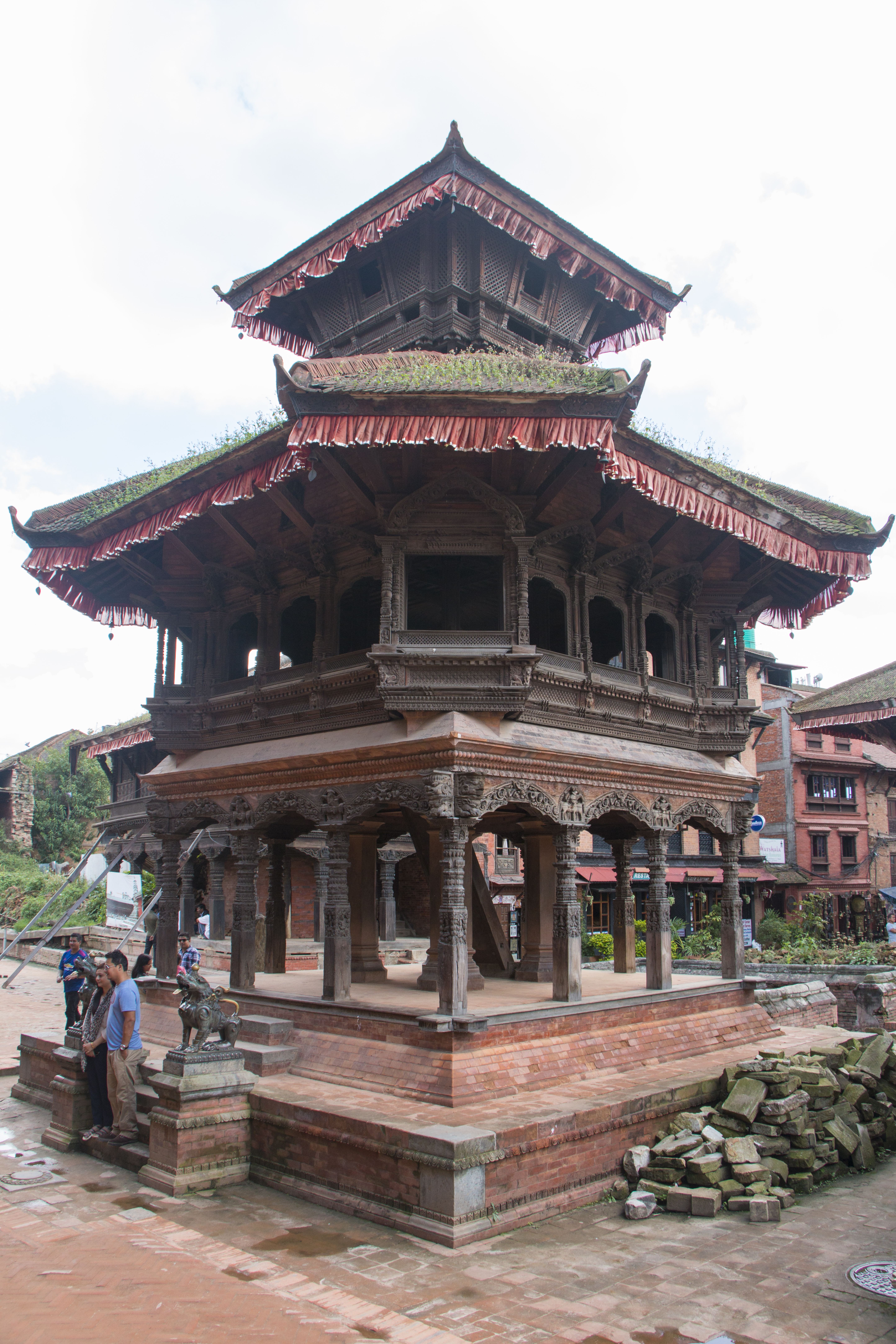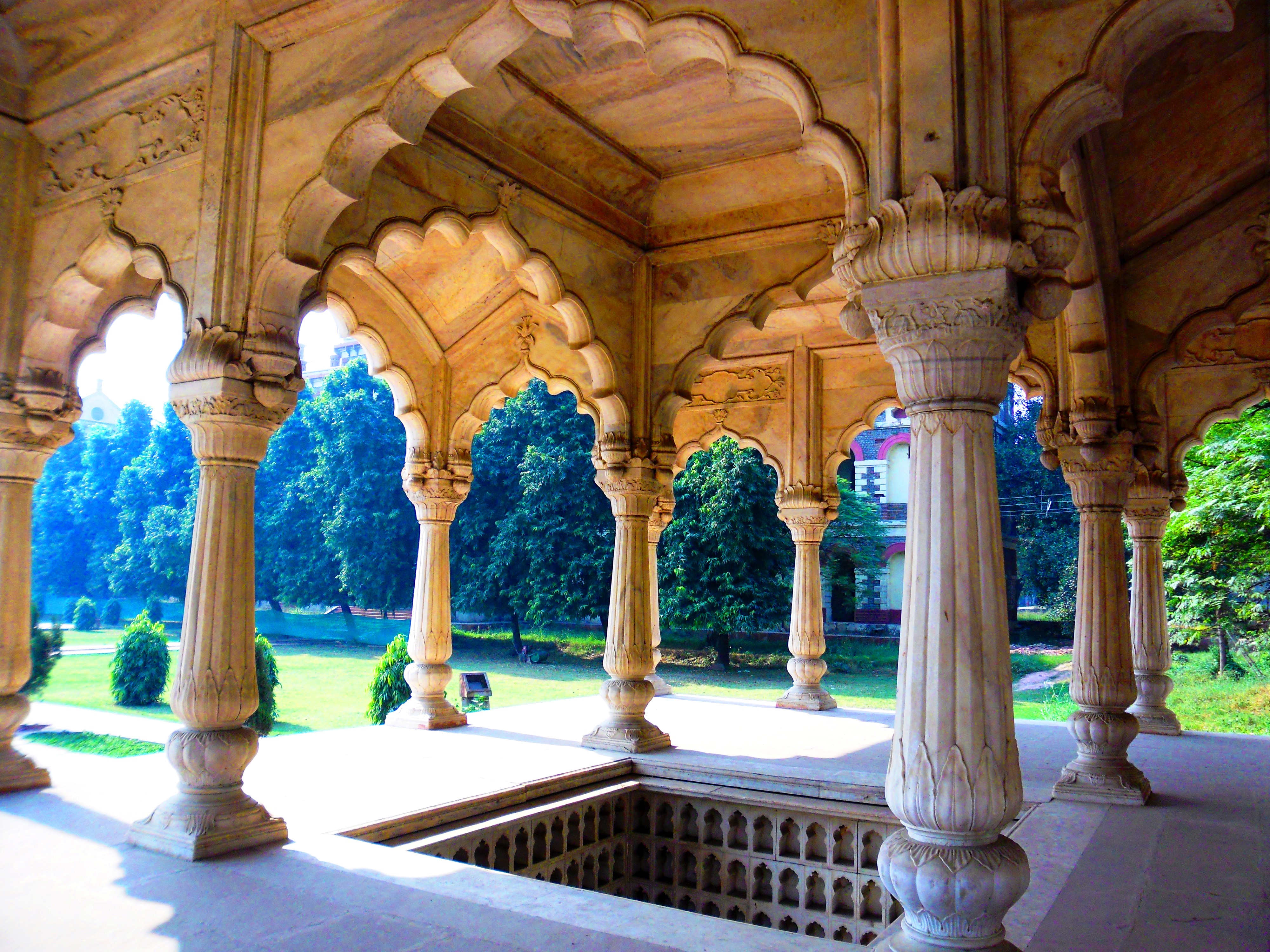|
Е›ДЃlДЃ
A śālā (Shala) is a Sanskrit term that means any "house, space, covered pavilion or enclosure" in Indian architecture.Monier Monier Williams (1994 updated), Sanskrit English Dictionary page 260 In other contexts śālā – also spelled ''calai'' or ''salai'' in South India – means Vedic Gurukulas or a college of higher studies and supported by local population and wealthy patrons.S.R. Rajakrishnan and Ajit Kumar (2016), Organisation and Conduct of Parthivapuram Sala as Gleaned from the Huzur Office Copper Plates, Heritage, University of Kerala, Volume 4, pp. 454-458 In the early Buddhist literature of India, ''śālā'' means a "hut, cell, hall, pavilion or shed" as in Vedic śālā (pavilion for Vedic recitation), Aggiśālā (hall with a fire), Paniyaśālā (water room). Etymology The word ''śālā'' (Skt: शाला) appears extensively in the Vedic literature, such as verse 3.12.1, 5.31.5 and others of ''Atharva Veda'', verse 1.2.3.1 of ''Taittirīya Brāhmaṇa ... [...More Info...] [...Related Items...] OR: [Wikipedia] [Google] [Baidu] |
Dharmashala
A dharamshala, also written as dharmashala, is a public resthouse or shelter in the Indian subcontinent. It also refers to Sikhism, Sikh places of worship before the introduction of Gurdwaras. Just as Caravanserai, sarai are for travellers and caravans, dharamshalas are built for religious travellers at pilgrimage sites. In Nepal there are dharamshalas especially built for pilgrims as well as dharamshalas for locals. Etymology ''Dharamshala'' (Devanagari: धर्मशाला; ITRANS: Dharmashaalaa; IAST: Dharmaśālā) is a word (derived from Sanskrit) that is a compound of ''dharma'' (धर्म) and ''shālā'' (शाला). A loose translation into English would be 'spiritual dwelling' or, more loosely, 'sanctuary'. Rendering a precise literal translation into English is problematic due to the vast and conceptually rich semantic field of the word ''Dharma#Etymology, dharma'', and the cultural aspect of India. In common Hindu usage, the word ''dharamshala'' refers to ... [...More Info...] [...Related Items...] OR: [Wikipedia] [Google] [Baidu] |
Goshala
Gaushalas or Goshalas () are protective shelters for stray cow, stray cows in India. Government grants and donations are the primary source of income of the cow shelters in India. Since 2014, when BJP government came into power in India, India has spent on cow shelters in two years between 2014 and 2016. Description Goshala, a Sanskrit word ("Go" means cow and "Shala" means a shelter place: Go + Shala = shelter for cows), means the abode or sanctuary for cows, calves and oxen. History The first ''Gaurakshini sabha'' (cow protection movement, cow protection society) was established in Punjab, India, Punjab in 1882. The movement spread rapidly all over North India and to Bengal Presidency, Bengal, Bombay Presidency, Bombay, Madras Presidency, Madras presidencies and other Central Provinces, central provinces. The organization rescued wandering cows and reclaimed them to groom them in places called gaushalas. Charitable networks developed all through North India to colle ... [...More Info...] [...Related Items...] OR: [Wikipedia] [Google] [Baidu] |
DДЃna
(Devanagari: , IAST: ) is a Sanskrit and Pali word that connotes the virtue of generosity, charity or giving of alms, in Indian religions and philosophies. In Hinduism, Buddhism, Jainism, and Sikhism, is the practice of cultivating generosity. It can take the form of giving to an individual in distress or need, or of philanthropic public projects that empower and help many. is an ancient practice in Indian traditions, tracing back to Vedic traditions. Hinduism (Sanskrit: ) means giving, often in the context of donation and charity. In other contexts, such as rituals, it can simply refer to the act of giving something. is related to and mentioned in ancient texts along with concepts of () which means benevolent deed, helping others; () which means fee one can afford; and (), which means alms. is defined in traditional texts as any action of relinquishing the ownership of what one considered or identified as one's own, and investing the same in a recipient without ex ... [...More Info...] [...Related Items...] OR: [Wikipedia] [Google] [Baidu] |
Parthivapuram
Parthasarathy Temple, also spelled Parthasarathi Temple, is a 9th-century Hindu temple dedicated to Vishnu in Kanyakumari district of Tamil Nadu, India. Spread over 2.5 acres, the temple is notable for the extensive records about it that have been discovered in Huzur Plates of Kollam. The inscriptions on these plates describe how the temple was built along with a '' salai'' (boarding school) for 95 students to study the Vedas and other subjects in the Taittiriya, Talavakara and Bhavishya ''Е›ДЃkhas''.T.A. Gopinatha Rao (1910), Travacore Archaeological Series, Volume 1, pp. 1-14 The temple has a square plan from adhisthana to its sikhara for the main shrine as well as smaller shrines in the compound. The main temple illustrates a tritala vimana with a Garuda namaskara mandapa in front. Inside the main temple is a raised mukha-mandapa that connects to the ''garbhagriha'' (sanctum). Around the sanction is an open pradakshina-patha (circumambulation path), which is surrounded by wal ... [...More Info...] [...Related Items...] OR: [Wikipedia] [Google] [Baidu] |
Pavilions
In architecture, ''pavilion'' has several meanings; * It may be a subsidiary building that is either positioned separately or as an attachment to a main building. Often it is associated with pleasure. In palaces and traditional mansions of Asia, there may be pavilions that are either freestanding or connected by covered walkways, as in the Forbidden City ( Chinese pavilions), Topkapi Palace in Istanbul, and in Mughal buildings like the Red Fort. * As part of a large palace, pavilions may be symmetrically placed building ''blocks'' that flank (appear to join) a main building block or the outer ends of wings extending from both sides of a central building block, the '' corps de logis''. Such configurations provide an emphatic visual termination to the composition of a large building, akin to bookends. The word is from French (Old French ) and it meant a small palace, from Latin">-4; we might wonder whether there's a point at which it's appropriate to talk of the beginnings o ... [...More Info...] [...Related Items...] OR: [Wikipedia] [Google] [Baidu] |
Battle Of Kandalur Salai
The battle of Kandalur salai (c. 988 CE), also spelled Kanthaloor salai, was a naval engagement of the Cholas under Rajaraja I (985—1014 CE) against the "salai" at Kandalur in south Kerala. The exact location of Kandalur—somewhere south Kerala—is a subject of scholarly debate. The above (988 CE) event is sometimes assumed to be identical with the "conquest of Vizhinjam by a general of Rajaraja , before the "burning of Lanka", described in the Tiruvalangadu Grant/Plates. The phrase "Kandalur salai kalamarutta" is again used as a title with distinction of three other Chola emperors also ( Rajendra, Rajadhiraja and Kulottunga). Assessment of the title The "salais" were considered prized possessions as they are claimed to have been sacked by many kings of South India. The character of the salais was re-examined in the 1970 paper 'Kantalur Salai-New Light on Brahmin Expansion in South India' by historian M. G. S. Narayanan. Older assessments Different views were expre ... [...More Info...] [...Related Items...] OR: [Wikipedia] [Google] [Baidu] |
Thiruvananthapuram
Thiruvananthapuram ( ), also known as Trivandrum, is the Capital city, capital city of the Indian state of Kerala. As of 2011, the Thiruvananthapuram Municipal Corporation had a population of 957,730 over an area of 214.86 sq. km, making it the largest and most populous city in Kerala. The larger Thiruvananthapuram metropolitan area had over 1.7 million inhabitants within an area of 543 sq. km..Trivandrum is one of the few cities in India that functions as a capital city, a maritime city, an information technology city, a space research city,a defence city,a bioscience city a tourism city, and a city known for its research and development institutions. Located on the west coast of India near the extreme south of the mainland, Thiruvananthapuram is a port city located from a heavily trafficked East-West shipping channel. The city is home to India’s first deep-water trans-shipment port, the Vizhinjam International Seaport Thiruvananthapuram. The city is characterised by its ... [...More Info...] [...Related Items...] OR: [Wikipedia] [Google] [Baidu] |
Talagunda Pillar Inscription
The TДЃlagunda pillar inscription of Kakusthavarman is an epigraphic record in Sanskrit found in the ruined Pranavalingeshwara temple northwest of village Talagunda, Karnataka, India. It is engraved on hard grey granite and dated to between 455 and 470 CE. It gives an account of a Kadamba Dynasty, Kadamba dynasty and the times of king ЕљДЃntivarma in northwest Karnataka. Location The pillar is located in front of the ruined and partially restored PrāṇaveЕ›vara Ељiva temple – also called Pranavalingeshwara temple – in Talagunda village, Shikaripur taluk in Shimoga district, Karnataka, India. It is close to the Karnataka State Highway 1, about 90 kilometers west of Davanagere and 80 kilometers northwest of Shivamogga city. Publication The inscription was discovered in 1894 by B. L. Rice, then Director of Archaeological Researches in Mysore and a celebrated pioneer of historical studies in Karṇāб№aka. He gave a photograph to the colonial era Indologist Buhler, who publis ... [...More Info...] [...Related Items...] OR: [Wikipedia] [Google] [Baidu] |
Parthasarathy Temple, Parthivapuram
Parthasarathy Temple, also spelled Parthasarathi Temple, is a 9th-century Hindu temple dedicated to Vishnu in Kanyakumari district of Tamil Nadu, India. Spread over 2.5 acres, the temple is notable for the extensive records about it that have been discovered in Huzur Plates of Kollam. The inscriptions on these plates describe how the temple was built along with a ''ЕљДЃlДЃ, salai'' (boarding school) for 95 students to study the Vedas and other subjects in the Taittiriya, Talavakara and Bhavishya ''Е›ДЃkhas''.T.A. Gopinatha Rao (1910), Travacore Archaeological Series, Volume 1, pp. 1-14 The temple has a square plan from adhisthana to its sikhara for the main shrine as well as smaller shrines in the compound. The main temple illustrates a tritala vimana with a Garuda namaskara mandapa in front. Inside the main temple is a raised mukha-mandapa that connects to the ''garbhagriha'' (sanctum). Around the sanction is an open pradakshina-patha (circumambulation path), which is surrounde ... [...More Info...] [...Related Items...] OR: [Wikipedia] [Google] [Baidu] |





